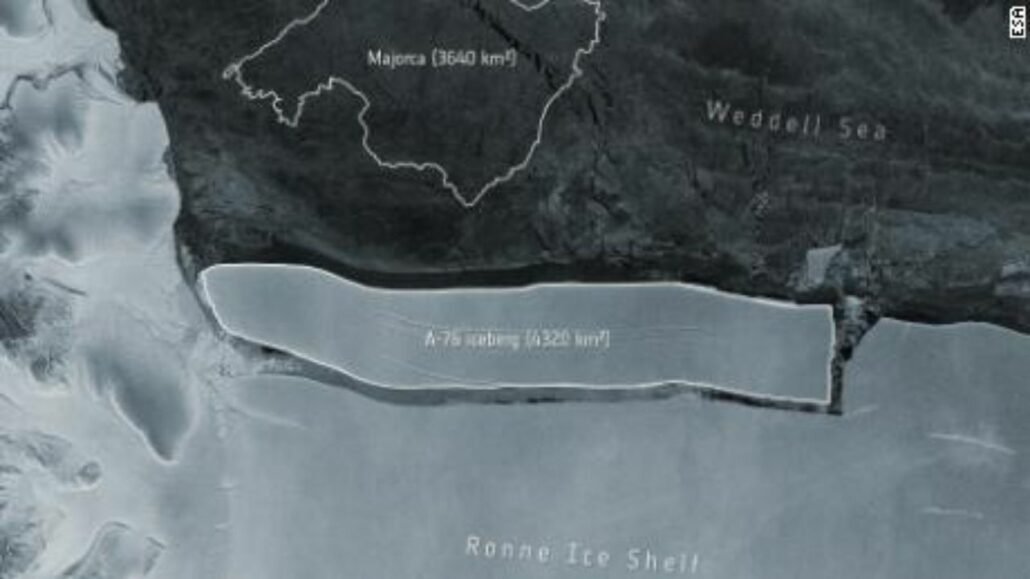A hulking iceberg, dubbed A-76, which is a little bigger than the state of Rhode Island has broken off from Antarctica. Rhode Island is a state of New England region of the United States which also falls under the category of seventh-least populous places of the world.
This chunk of ice is 25 kilometers wide and 170 kilometers long creating a whole mass of 4320 sq km in size which is three times the size of New Delhi, which is 1484 sq km. It is currently the world’s largest iceberg. This finger-shaped iceberg has got separated from the western side of Antarctica’s Ronne Ice shelf, according to the Europe Space Agency as captured from the satellite.
The breakaway was first observed by British Antarctic Survey and confirmed by the Maryland-based US National Ice Center using images captured from Copernicus Sentinel-1, which comprises two polar-orbiting satellites.
A researcher in British Antarctic Survey named Keith Makison was the first to spot this. Now the finger-shaped ice is floating along the Weddell Sea. The satellites will continue to track the movements of the iceberg.
A-76 is now likely to split into two or three pieces, which is not because of climate change as stated by Ted Scambos who is a glaciologist at the University of Colorado at Boulder.
Last year a big iceberg broke off named A-68A from Antarctica to the coast of the South Georgia, which was considered as the largest up till now . The scientists were concerned that the iceberg might hit the breeding ground of sea lions and penguins, creating enormous destruction of wildlife in Antarctica, but luckily it ended up splitting and broke into pieces .
In recent time because of tremendous climate changes, it’s not uncommon to occur nature destructions. Because of reasons like global warming we see a rapid increase in various kinds of calamities, which is increasing with time.
Due to the increase in global warming, the melting of the iceberg is not that unnatural. Since 1880, the average sea level has increased by 9 inches and one-fourth of its increase is due to the ice melting in Greenland and Antarctic ice sheets. According to NASA, A-76 is one-third the size of the biggest iceberg recorded in history.
An iceberg named B-15 which was calved off of Antarctica Ross Ice Shelf, which took place 21 years ago was over 4,200 square miles. Continuous calving of the ice-shelf has dragged concern for the scientists across the world. UK reachers have stated that one-third of the ice-shelves in Antarctica has the risk of shedding down due to climate change which can lead to an increase in water level into the sea if the temperature reaches 4 degrees Celsius.
“A76 and A74 are both just part of natural cycles on ice shelves that had calved nothing big for decades”, as stated by Laura Gerrish– a scientist at the British Antarctic Survey.
On our curiosity, everyone must wonder how this iceberg was named A-76. Icebergs are named based on where it was observed at the very beginning. Antarctica is divided into quadrants with the letters A,B,C,D , denoting different alphabets for different regions.
After the alphabet is confirmed a sequential number is given to it with the number of icebergs observed. Just like A-76 was first spotted in Weddell Sea/Bellingshausen which is an A region and is the 76th number iceberg observed there according to the US National Ice Center.
If another iceberg is formed from an already named iceberg, then a sequel alphabet is added at end of the existing name , just like the above example of A-68A .
“How long this will take and how much the iceberg will fragment before reaching the Island, as well as the exact trajectory, are hard to predict, though” as stated by Anne Braakman-Folgmann, a researcher from the University of Leeds.
Also Read
